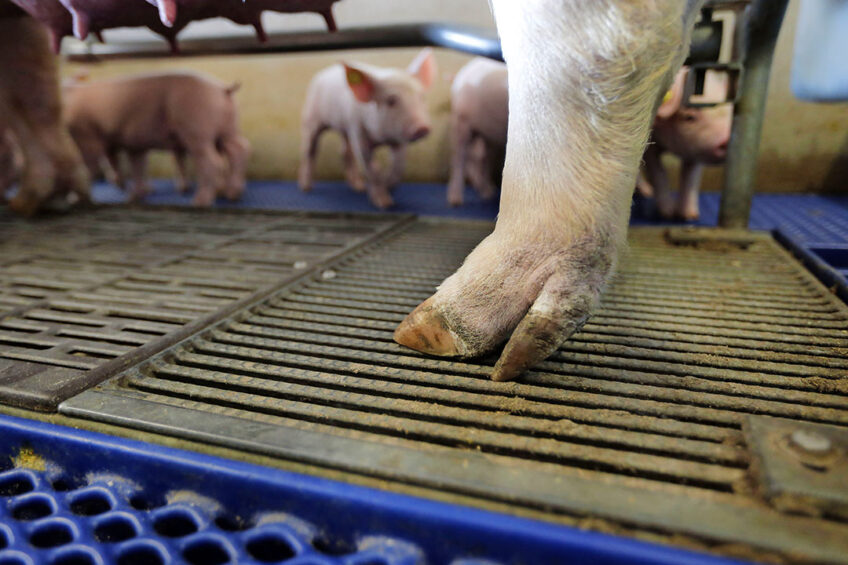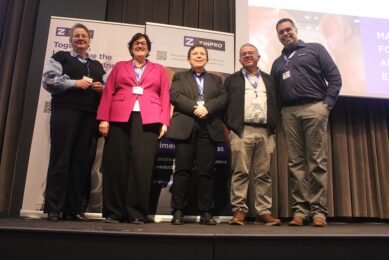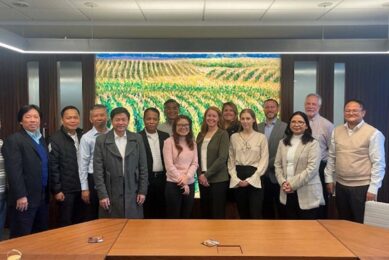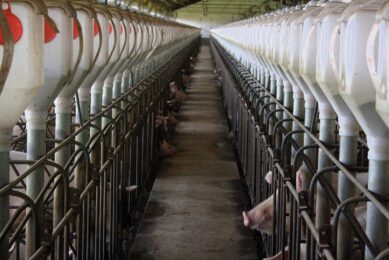The impact of sow lameness on piglets

Could sow lameness have an impact on piglet survival? That question was asked in a recent study. Swine health and welfare expert Dr Monique Pairis-Garcia highlights the potential longer-term effects of providing good sow welfare.
Lameness remains a common issue amongst swine producers, particularly those working on breeding farms. Lameness is a major welfare issue that alters the physiology and behaviour of the sow. Lame sows often experience pain as a by-product of lameness as well as deviations to behavioural activity and exploration.
Economic implications of sow lameness
Lameness also has significant economic implications for the producer. Lameness is the number one involuntary reason for culling sows in the US and lameness has negative impacts on reproductive health and sow longevity. Given producers do not break even until a sow reaches her 3rd parity, the loss of a gilt or 2nd parity sow due to lameness results in a direct economic loss to the producer.
Approximately 15% of sows are culled due to lameness and lameness prevalence on farm ranges anywhere from 8-16%. So what does this mean for the piglets farrowed from these lame sows? Does the physical health status of a sow influence not only the piglet at birth, but later on in life? Researchers at the University of São Paulo, Brazil, in collaboration with University of Teramo, Italy, and Universidad de La Salle, Colombia, looked at this very question.
Impacts of sow lameness on piglet performance
In a newly published research article, investigators assessed the impacts of sow lameness on weaned pig performance. Weaned pigs were grouped according to the sow’s lameness status:
- G1 = without lameness;
- G2 = moderate lameness;
- G3 = severe lameness.
In addition, weaned pig activity levels, body weight and behaviour were assessed.
The results from this study suggest that the lameness status of the sow, particular those sows identified with moderate lameness impacts piglet weight at weaning and behavioural responses towards pen mates. Piglets born to moderately lame sows demonstrated a greater number of skin lesions associated with aggressive interactions. This suggests that pigs born to sows without lameness have better coping skills when placed into a challenging social setting and more effectively avoided physical confrontation with pen mates compared to piglets born to moderately lame sows.
Read also: Smart farming ideas for the swine industry
Economic impacts of welfare decisions
This work is the first of its kind in regards to evaluating how sow lameness influences the developmental outcomes of piglets and suggests that health measures can have welfare and economic impacts downstream. It is the moderately lame sows that often become the most challenging to treat, as clinical signs of lameness may often be subtle or wax and wane throughout production.
Further work must be done to not only identify these animals before the lameness becomes too severe or untreatable but also to refine genetic selection criteria to ensure feet and leg conformation is adequate for sow body type and facility design.
 Beheer
Beheer








 WP Admin
WP Admin  Bewerk bericht
Bewerk bericht